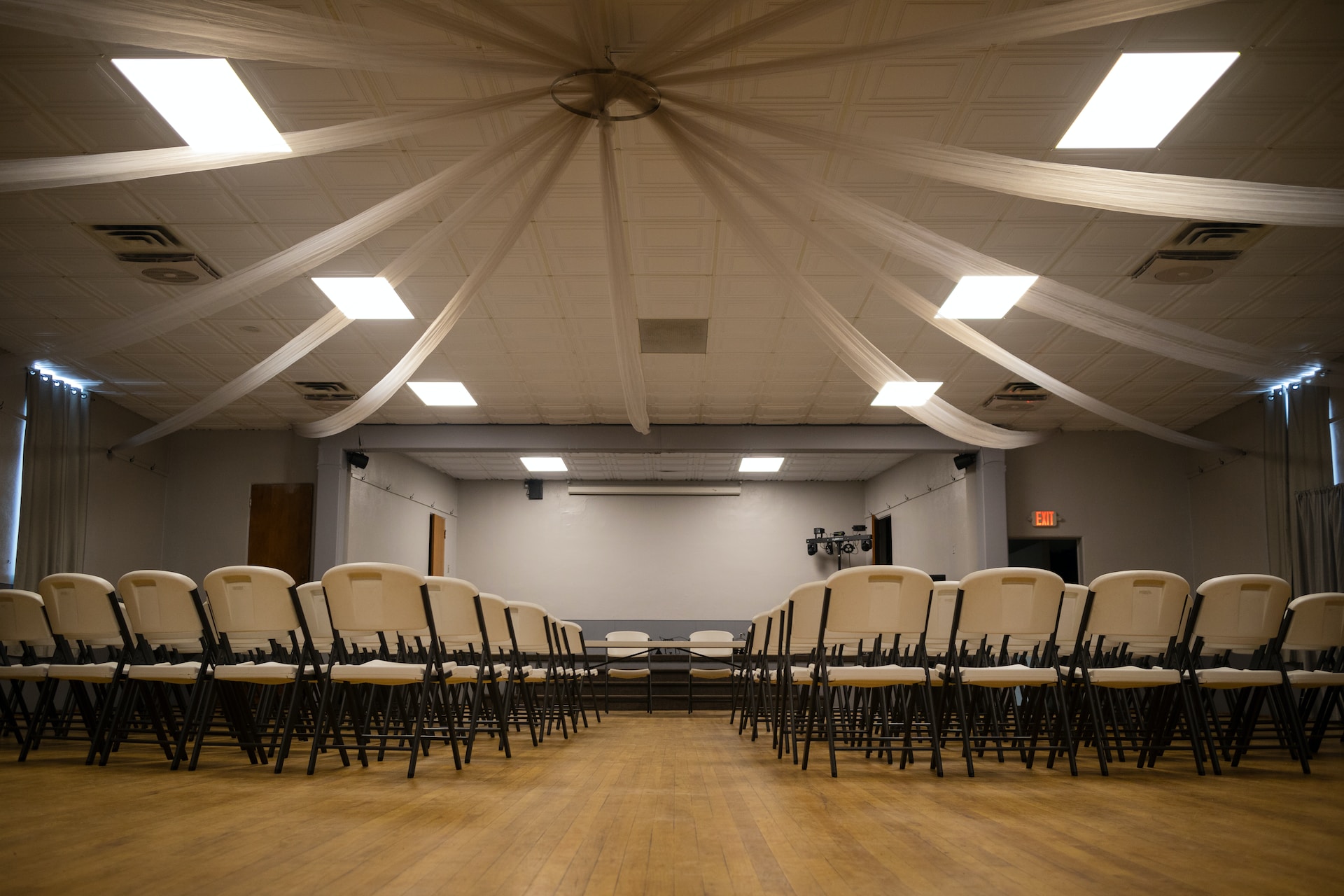Suspended ceilings, also known as drop ceilings or grid ceilings, have become a ubiquitous feature in modern interior design. With lots of different types of suspended ceilings out there you’ve likely encountered them in commercial spaces, offices, and even residential settings too. These ceiling systems serve a dual purpose: they provide an appealing aesthetic while delivering functional benefits by concealing utilities and enhancing the overall ambience of the room. However, the mechanics behind suspended ceilings are often overlooked. In this comprehensive exploration, we’ll delve deep into the intricacies of suspended ceiling systems, shedding light on their underlying mechanics, benefits, and impact on various spaces.
Understanding the Basics of Suspended Ceilings
At its core, a suspended ceiling is a secondary ceiling structure that hangs below the primary structural ceiling of a room. This secondary ceiling also referred to as a drop ceiling, is meticulously constructed using a grid system composed of metal tracks and cross tees. These components form a framework that accommodates individual ceiling tiles, each crafted from a variety of materials catering to specific requirements.
The Intricate Workings of a Suspended Ceiling System
Grid System:
The foundation of any suspended ceiling is its grid system. This complex framework consists of main runners and cross tees. The main runners, which are longer metal pieces, are attached parallel to the primary ceiling. These main runners provide the primary support structure for the entire system. Running perpendicular to the main runners, cross tees interconnect, creating a measured grid pattern. The result is a visually organised layout that guides the placement of the ceiling tiles.
Hanging Wires:
The grid system is suspended from the primary ceiling using hanging wires or hangers. These adjustable wires play a crucial role in ensuring the suspended ceiling is level even if the primary ceiling has irregularities. This adaptability enables installers to maintain a uniform appearance despite any inherent structural imperfections.
Ceiling Tiles:
Once the grid system is secured, ceiling tiles are slotted into the grid openings. These ceiling tiles come in various sizes, shapes, and designs, providing a spectrum of options to cater to diverse aesthetic and functional preferences. The materials used for these tiles vary widely, including mineral fibre, metal, and acoustic panels. Each material offers distinct advantages, such as fire resistance, acoustic performance, or moisture resistance. An inherent advantage of these ceiling tiles is their ease of removal, simplifying access to the space above the ceiling for maintenance, repairs, or modifications.
Benefits of Suspended Ceiling Systems
Aesthetic Enhancement:
One of the most apparent benefits of suspended ceilings is their ability to transform the visual aspect of a space. By obscuring unsightly pipes, wiring, and HVAC systems, these ceilings contribute to a clean and polished look. The concealed framework also offers a sense of architectural elegance, adding depth to the room’s appearance.
Acoustic Improvement:
Acoustic performance is a critical consideration in interior spaces, and suspended ceilings excel in this aspect. Many ceiling tiles are engineered to absorb sound, significantly improving the acoustic quality within a room. This feature is particularly valuable in settings where noise control is vital, such as offices, conference rooms, and theatres.
Thermal Insulation:
Suspended ceilings can indirectly influence the thermal dynamics of a room. By creating an additional layer of insulation between the room and the plenum above, these ceilings contribute to better temperature regulation. This, in turn, aids in energy conservation by reducing the need for excessive heating or cooling.
Concealed Utilities:
Behind the aesthetic and acoustic benefits lies a practical advantage – the ability to hide utilities. The space between the suspended ceiling and the main ceiling provides a convenient area to conceal electrical wiring, plumbing, and HVAC ducts. This not only contributes to the aesthetic appeal but also simplifies the process of maintenance and repairs. Accessing utilities becomes hassle-free, as there’s no need to disturb the main space.
Suspended ceilings are more than mere embellishments; they are sophisticated systems with multifaceted advantages. From their meticulously designed grid structure to the diverse range of ceiling tiles they accommodate, these systems play a pivotal role in elevating the functionality, aesthetics, and comfort of interior spaces. The next time you step into a room adorned with a suspended ceiling, you’ll have a profound appreciation for the meticulous engineering that underlies this ingenious system. In merging form with function, suspended ceilings have become an integral aspect of modern interior design, creating seamless spaces that harmonise beauty and utility.
If you want to speak to our accredited team about the installation of a suspended ceiling, or any of our other services, get in touch and we’ll be happy to you with your project.


